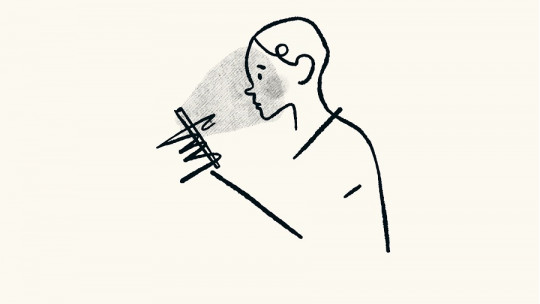
The word phobia in the field of psychology is used to refer to that set of reactions of intense fear that are usually accompanied by avoidance behaviors, having normally been induced by situations (anticipated or real) that objectively do not justify such forms of reply.
There is a wide variety of types of phobias, among which we are going to highlight in this article megalophobia, which consists of a person experiencing an intense fear of objects that have large dimensions (e.g., skyscrapers). , large ships, airplanes, trucks, cranes or even objects smaller than the previous ones).
In this article We will see what megalophobia consists of and how this type of phobia could affect the daily lives of those who suffer from it. We will also give some brief guidelines that can be applied for your treatment.
What is megalophobia?
Megalophobia is not a very common phobia among the general population; However, there have been cases or moments in which many people could have experienced something quite similar.
Megalophobia is the panic or fear that some people feel about large things or objects and may suffer an intense feeling of anxiety in those situations in which a noticeably large object is present (e.g., passing in front of a skyscraper).
In this case we are not referring to objects that are larger than normal, but rather that by their nature have a large size, such as airplanes, trucks or skyscrapers. It could also happen to large animals such as a giraffe, an elephant or a hippopotamus.
Megalophobia is an anxiety-related disorder that can significantly interfere with the lives of people who suffer from it so they usually avoid any type of situation in which they are exposed to large objects, which is why they usually have a preference for rural areas because there are no large buildings, they may avoid traveling by means of transport. large transport such as an airplane or even experiencing a scary section when they pass close to a large truck on a highway with their car.
Therefore, in the most extreme cases in which megalophobia is suffered, it could happen that a person does not want to leave their house in order to avoid exposure to large objects, even missing work, missing school, or avoiding going out with friends, among others (e.g., tall buildings); This normally occurs to a greater extent in those people who live in large cities.
It should also be noted that there is no single factor that can cause megalophobia, as is the case with the rest of the phobias or even other types of mental disorders. Among these factors could be genetic inheritance from a parent who had suffered from a similar phobic disorder and, on the other hand, it could also be that a behavior learned from the past had also influenced having experienced some negative situation in the past with respect to the stimulus. phobic Therefore, megalophobia could be due to the combination of both factors, both genetic and past experiences.
Symptoms
In the main diagnostic manuals on mental disorders, such as the ICD-11 of the World Health Organization (WHO) and the DSM-5 of the American Psychiatric Association (APA), the classification of megalophobia could be framed within phobias. specific, which is one of the types of anxiety disorders. Below we will see the main characteristics of specific phobias in each of the manuals we have just mentioned.
1. Specific phobia in DSM-5
The main characteristics of megalophobia, being a type of specific phobia According to the DSM-5 they would be the following:
2. Specific phobia in ICD-11
The characteristics that would allow megalophobia to be diagnosed, being a type of specific phobia according to ICD-11 would be those listed below:

Treatment of megalophobia
If a person thinks that they might suffer from megalophobia or any type of phobia (e.g., aerophobia, agoraphobia, acrophobia, etc.) that seriously impacts their quality of life, due to their avoidance of a wide variety of situations in your daily life, it would be advisable contact a mental health professional so that it can help you face your situation and little by little train a series of guidelines that allow you to face those types of situations that cause the phobia you suffer from and thus recover your normal life.
Furthermore, megalophobia or any other type of problem that is related to mental health should be evaluated and diagnosed, if necessary, by a qualified professional, so that he or she could seek the most appropriate treatment for it. each particular case.
Below we will briefly explain what they consist of psychological treatments that have extensive experience in treating specific phobias.
1. Behavioral therapy
Among the psychological treatments for specific phobias, and more specifically for megalophobia, is behavioral therapy, which It is based on behavioral learning theories and usually begins with relaxation training which includes a combination of progressive muscle relaxation exercises, exercises aimed at managing attention and also breathing exercises.
It is important to highlight that relaxation training is highly effective for a wide variety of anxiety-related disorders when used in isolation, as well as in combination with other psychological techniques and therapies.
A technique that is highly effective for this type of phobia, such as megalophobia, is exposure to the feared stimulus (in this case it would be large objects), and can be applied in real life, in imagination or even through virtual reality, the last two being highly advisable when it is difficult to expose oneself during therapy to the feared stimulus in real life, as would occur in the case of megalophobia.
It is important to note that for the exposure to work, the person must first be trained to be able to perform this technique correctly, being able to do it gradually and managing their thoughts and emotions during the exposure in a controlled manner. Exposure is also a good tool to reduce cognitive distortions that could be associated with megalophobia.
- You may be interested: “The 10 benefits of going to psychological therapy”
2. Cognitive therapy
Another psychological treatment that can be used to treat cases of megalophobia is cognitive therapy, since it is based on dialogue between the patient and the therapist so that the latter helps the former to identify which are those automatic and distorted thoughts, of a negative nature in order to be able to analyze them so that they can be replaced by other thoughts that are more rational and better adapted to the real situation, such as exposure to large objects in the case of megalophobia.
Among the most used techniques within cognitive therapy, it is worth highlighting cognitive restructuring, which would be oriented in the case of megalophobia to help the patient identify their irrational beliefs regarding exposure to large objects and modify them through of their rational questioning in order to replace them with another rational and more adaptive perspective.








